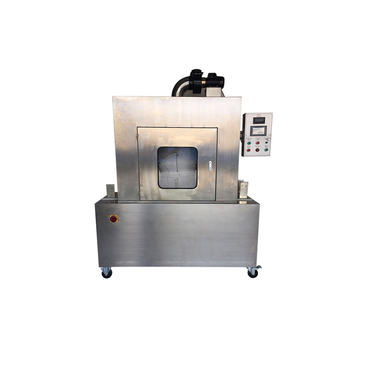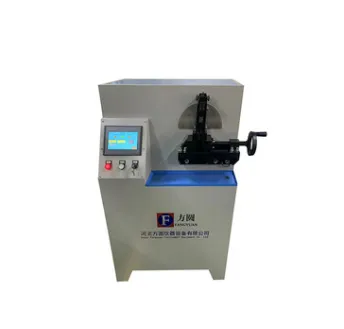Premium High Insulation Resistance Test Equipment - Accurate & Reliable Tools

(high insulation resistance test equipment)
Critical Importance of High Insulation Resistance Test Equipment
High insulation resistance testing remains fundamental for ensuring electrical safety and system reliability across industries. This essential diagnostic procedure prevents catastrophic equipment failures by identifying deteriorating insulation before breakdown occurs. Leading manufacturers continually advance this technology to meet evolving industry demands with precision instruments capable of delivering up to 15 kV test voltages. Critical sectors relying on these instruments include:
- Advanced technical specifications and performance benchmarks
- Comparative analysis of leading equipment manufacturers
- Customization options for specialized applications
- Comprehensive safety protocols and compliance standards
- Practical implementation scenarios across industries
- Detailed ROI calculations and maintenance procedures
- Future developments in insulation testing methodology
Technical Specifications and Performance Metrics
Modern high insulation resistance testers demonstrate exceptional capabilities with resistance measurement ranges extending to 10 TΩ and accuracy within ±1.5% of reading. Advanced models incorporate polarization index (PI) and dielectric absorption ratio (DAR) calculations automatically. Temperature compensation algorithms account for environmental variables, while built-in data logging captures up to 10,000 readings with timestamps. The latest IEC 61010-1 safety-certified designs feature arc detection systems that interrupt testing within 3 milliseconds upon detecting hazardous leakage currents.
Comparative Manufacturer Capabilities
The industrial instrumentation sector features specialized manufacturers each offering distinct technical advantages. Selection criteria should prioritize measurement accuracy, safety certifications, and manufacturer support infrastructure. Technical differentiation includes automated test sequencing, cloud-based data management, and proprietary measurement technologies that enhance reliability in harsh environments.
| Manufacturer | Max Voltage (kV) | Measurement Range | Data Logging | IP Rating | Compliance Standards |
|---|---|---|---|---|---|
| Megger | 15 kV | 1 TΩ | 5,000 points | IP65 | IEC 61557 |
| Hioki | 12 kV | 8 TΩ | 10,000 points | IP54 | IEC 61010 |
| Fluke | 10 kV | 5 TΩ | 2,500 points | IP53 | CAT IV 600V |
| Chauvin Arnoux | 10 kV | 2 TΩ | 500 points | IP40 | EN 61326 |
Application-Specific Engineering Solutions
Industrial clients require customized configurations for unique operational environments. For offshore wind farms, manufacturers develop pressurized enclosures with anti-corrosion coatings that withstand 95% relative humidity. In rail transportation applications, engineers implement specialized HV probes capable of testing 3.3 kV traction motors during scheduled maintenance. The aerospace industry mandates equipment with electromagnetic compatibility (EMC) certifications ensuring uninterrupted avionics function during concurrent testing operations.
Cross-Industry Deployment Case Studies
Implementation scenarios demonstrate measurable operational improvements. A Scandinavian power utility achieved 43% reduction in transformer failures after implementing automated scheduled testing of 132 kV substation assets. Marine engineering firms report 78% decrease in vessel electrical system incidents following regular megger testing of thruster motors. Semiconductor fabrication plants increased cleanroom uptime by 27% through proactive monitoring of high-voltage ionizer insulation systems.
Operational Economics and Maintenance Protocols
Cost-benefit analysis reveals compelling financial incentives with ROI typically achieved within 18 months of implementation. Systematic insulation resistance monitoring extends critical assets service life by an average of 3.2 years while reducing unplanned downtime by 62%. Preventative maintenance programs should incorporate bimonthly calibration verification using traceable standards. Standard operating procedures require storing instruments in climate-controlled environments maintaining 40-60% humidity with annual certification against NIST standards.
Strategic Considerations for High Insulation Resistance Test Equipment Selection
Procurement decisions for high insulation resistance test equipment
fundamentally impact operational safety and financial performance. Technical specifications must be precisely aligned with application requirements considering environmental and operational challenges. Leading high insulation resistance test equipment manufacturers now incorporate predictive algorithms using historical test data to forecast insulation degradation timelines. As global infrastructure modernizes, next-generation testing platforms will increasingly feature IoT connectivity and AI-assisted diagnostic capabilities that transform preventative maintenance protocols.

(high insulation resistance test equipment)
FAQS on high insulation resistance test equipment
Q: What is high insulation resistance test equipment used for?
A: This specialized equipment measures the resistance of insulation materials in electrical systems. It ensures safety by detecting potential breakdown risks. Applications include testing cables, transformers, and industrial machinery.
Q: Which companies manufacture high-insulation resistance testers?
A: Leading manufacturers include Megger, Hioki, and Fluke Corporation. These companies produce certified equipment meeting IEC 61010 safety standards. They offer portable handheld testers to benchtop industrial units.
Q: What services do high insulation resistance test equipment companies provide?
A: Manufacturers provide calibration, repair, and technical support services. Many offer custom testing solutions for specific industrial needs. Training programs for proper equipment operation are also common.
Q: Where to find global exporters of high insulation resistance testers?
A: Major exporters operate from industrial hubs like Germany, Japan, and the United States. Trade platforms like Alibaba and industry exhibitions showcase international suppliers. Certified exporters comply with destination countries' electrical safety regulations.
Q: How to select reliable high insulation resistance test equipment manufacturers?
A: Verify certifications like ISO 9001 and product safety marks. Evaluate measurement accuracy specifications and voltage ranges offered. Review industry references and warranty terms before procurement.
-
The Role of Tensile Force Testers in Quality Control and Material Science
NewsAug.01,2025
-
Maintenance and Safety Tips for Aging Ovens
NewsAug.01,2025
-
Density Balance in Forensic Science
NewsAug.01,2025
-
Advanced Optical Measurement Technologies
NewsAug.01,2025
-
A Buyer’s Guide to Tensile Test Machines
NewsAug.01,2025
-
Why the Conductor Resistance Constant Temperature Measurement Machine Redefines Precision
NewsJun.20,2025
 Copyright © 2025 Hebei Fangyuan Instrument & Equipment Co.,Ltd. All Rights Reserved. Sitemap | Privacy Policy
Copyright © 2025 Hebei Fangyuan Instrument & Equipment Co.,Ltd. All Rights Reserved. Sitemap | Privacy Policy
